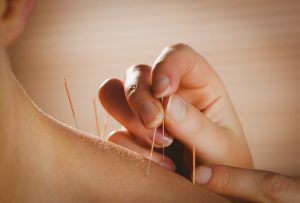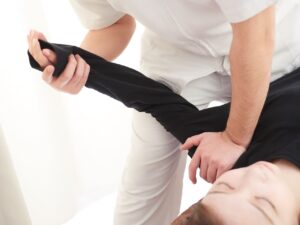Understanding Achilles Tendonitis
Achilles tendonitis is a common condition that affects many individuals, especially those involved in sports or physical activities. This section will provide an overview of what Achilles tendonitis is, its causes, and its symptoms.
What is Achilles Tendonitis?
Achilles tendonitis is an overuse injury that occurs when the Achilles tendon, which connects your calf muscles to your heel bone, becomes inflamed. This inflammation can cause pain and discomfort at the back of your leg near the heel. Achilles tendonitis can range from mild to severe and can impact your ability to walk or perform everyday activities.
| Aspect | Description |
|---|---|
| Location | Back of the leg near the heel |
| Affected Area | Achilles tendon |
| Common Severity | Mild to severe |
Causes of Achilles Tendonitis
Achilles tendonitis can be triggered by a variety of factors. Understanding these causes can help you prevent or manage the condition effectively.
- Overuse: Engaging in repetitive activities that strain the Achilles tendon, such as running or jumping.
- Sudden Increase in Activity Level: Increasing the intensity or duration of physical activities too quickly.
- Improper Footwear: Wearing shoes that do not provide adequate support for your feet and ankles.
- Tight Calf Muscles: Lack of flexibility in the calf muscles can put extra strain on the Achilles tendon.
- Flat Feet or High Arches: Individuals with abnormal foot structures may be more susceptible to Achilles tendonitis.
For a deeper exploration of sports-related injuries, visit our article on physiotherapy for sports injuries.
Symptoms of Achilles Tendonitis
Recognizing the symptoms of Achilles tendonitis can help you seek timely intervention and avoid further complications.
- Pain: A dull or sharp pain along the back of your leg near the heel, especially after physical activity.
- Stiffness: Stiffness in the Achilles tendon, particularly in the morning or after periods of inactivity.
- Swelling: Swelling or thickening of the tendon area.
- Limited Range of Motion: Difficulty in moving your ankle or foot properly.
- Tenderness: Tenderness when touching or applying pressure to the affected area.
| Symptom | Description |
|---|---|
| Pain | Dull or sharp pain near the heel |
| Stiffness | More pronounced in the morning |
| Swelling | Tendon area may thicken |
| Limited Range of Motion | Difficulty moving ankle or foot |
| Tenderness | Tender when pressure is applied |
Understanding these symptoms can help you take the necessary steps to seek physiotherapy treatment and manage the condition effectively.
For more information on managing other types of pain, you might find our articles on physiotherapy for knee pain and physiotherapy for shoulder pain helpful.
The Role of Physiotherapy
When coping with Achilles tendonitis, physiotherapy plays a significant role in your recovery journey. This section explores how physiotherapy can specifically aid in treating Achilles tendonitis and the benefits it offers.
How Physiotherapy Helps with Achilles Tendonitis
Physiotherapy targets the underlying issues of Achilles tendonitis through various tailored methods. Here’s how it can help:
- Pain Reduction: Techniques such as massage therapy and ice application can help decrease inflammation and alleviate pain.
- Improved Flexibility: Stretching exercises increase the flexibility of the tendon and muscles, reducing stiffness.
- Strength Training: Strengthening exercises for the calf muscles provide better support to the Achilles tendon.
- Corrective Exercises: Addressing biomechanical abnormalities through customized exercises can prevent further strain on the tendon.
- Manual Therapy: Hands-on treatments by a therapist improve tissue mobility and promote healing.
These measures collectively contribute to a more effective recovery process, enabling you to resume your normal activities faster.
Benefits of Physiotherapy for Achilles Tendonitis
Physiotherapy offers numerous advantages to those suffering from Achilles tendonitis. Here are some key benefits:
| Benefit | Description |
|---|---|
| Pain Management | Effective techniques to reduce and manage pain. |
| Enhanced Mobility | Improves the range of motion in your ankle, aiding in better movement. |
| Accelerated Recovery | Speeds up the healing process by promoting tissue repair. |
| Prevention of Recurrence | Educates you on preventive measures and proper techniques to avoid future injuries. |
| Customized Care | Offers personalized treatment plans tailored to your specific condition. |
By incorporating these physiotherapy strategies, you not only alleviate the symptoms of Achilles tendonitis but also build a foundation for long-term tendon health. For more information on what to expect during your sessions, read our guide on physiotherapy treatment.
When it comes to finding the right professional to help you on your journey, check our tips for finding the right physiotherapist.
Tailored Physiotherapy Treatment
Assessment and Diagnosis
To effectively manage Achilles tendonitis, a thorough assessment and diagnosis are essential. Your physiotherapist will start with a detailed medical history and physical examination. This includes evaluating the range of motion, strength, and flexibility of your Achilles tendon and surrounding muscles. They may also perform functional tests to assess gait and other movements that could affect your condition.
| Assessment Component | Description |
|---|---|
| Medical History | Previous injuries, activity levels |
| Physical Examination | Range of motion, flexibility, strength |
| Functional Tests | Gait analysis, movement patterns |
Customized Treatment Plan
Based on the assessment and diagnosis, a customized treatment plan will be developed. This plan is tailored to your specific condition, severity of symptoms, and lifestyle needs. It often includes a combination of exercises, manual therapy, and education on activity modifications. Your physiotherapist will set realistic goals and closely monitor your progress.
| Treatment Element | Description |
|---|---|
| Exercise Programs | Strengthening, stretching, conditioning |
| Manual Therapy | Soft tissue mobilization, joint manipulation |
| Activity Modifications | Guidance on reducing stress on the tendon |
Techniques Used in Physiotherapy
Physiotherapists employ various techniques to help you recover from Achilles tendonitis. These techniques aim to alleviate pain, improve functionality, and prevent future injuries. You can explore different approaches to find what works best for your condition.
- Strengthening Exercises: Focused on strengthening the calf muscles and Achilles tendon.
- Stretching Routines: Target the calf muscles to improve flexibility.
- Manual Therapy: It may include techniques like soft tissue mobilization and joint manipulation.
- Eccentric Training: This involves lengthening the tendon under tension to promote healing.
- Ultrasound Therapy: Uses sound waves to reduce inflammation and enhance blood flow.
- Electrical Stimulation: Helps to reduce pain and promote muscle activation.
These tailored techniques are designed to offer comprehensive care and facilitate a quicker, more effective recovery. For more specific exercises, you can visit our article on physiotherapy exercises.
By understanding and following these methods, you maximize the benefits of physiotherapy treatment for Achilles tendonitis and work towards a healthier, pain-free life.
Home Care and Rehabilitation
When it comes to managing Achilles tendonitis, home care and rehabilitation play a crucial role in your recovery process. Incorporate specific exercises and stretches, practice self-care tips, and adopt preventive measures to ensure your Achilles tendon remains healthy.
Exercises and Stretches
Exercises and stretches are fundamental in rehabilitating your Achilles tendon. These activities help to improve flexibility, strength, and overall function. Here are some exercises you can try:
- Calf Stretch: Stand facing a wall with your hands on the wall for support. Place one foot forward and one foot back, keeping both heels flat on the ground. Bend the front knee while keeping the back leg straight. Hold for 30 seconds and switch sides.
- Heel Drop: Stand on a step with your heels hanging off the edge. Slowly lower your heels below the level of the step, then raise them back to the starting position. Perform 10-15 repetitions.
- Seated Towel Stretch: Sit with your legs extended. Loop a towel around the ball of your foot and gently pull it towards you while keeping your knee straight. Hold for 30 seconds and switch legs.
Visit our physiotherapy exercises page for more exercises specifically designed for Achilles tendonitis.
Self-Care Tips
Self-care is essential in the healing process. By following these tips, you can help alleviate pain and promote recovery:
- Ice Therapy: Apply ice to the affected area for 15-20 minutes, 3-4 times a day to reduce inflammation and pain.
- Rest: Avoid activities that put strain on your Achilles tendon. Allow time for healing by giving your body the rest it needs.
- Wear Proper Footwear: Ensure your shoes provide adequate support and cushioning to minimize stress on your Achilles tendon.
- Elevate Your Leg: When resting, elevate your leg to reduce swelling.
For a comprehensive guide on self-care practices, see our article on physiotherapy treatment.
Preventive Measures
Taking preventive measures can help you avoid future episodes of Achilles tendonitis. Here are some steps you can follow:
- Warm-Up: Always warm up before engaging in physical activities to prepare your muscles and tendons.
- Strength Training: Incorporate exercises that strengthen the muscles around your Achilles tendon to provide better support.
- Gradual Increase in Activity: Avoid sudden increases in intensity or duration of physical activities. Gradually build up your activity level.
- Flexibility Exercises: Maintain flexibility in your calf muscles and Achilles tendon through regular stretching.
| Measure | Frequency |
|---|---|
| Warm-Up | Every exercise session |
| Strength Training | 2-3 times per week |
| Flexibility Exercises | Daily |
Visit our physiotherapy for sports injuries page to learn more about preventing injuries and maintaining healthy tendons.
By incorporating these exercises, self-care tips, and preventive measures into your routine, you can effectively manage and rehabilitate your Achilles tendonitis. If you’re looking for additional support, consider finding a physiotherapy clinic near you.
Working with a Physiotherapist
Your journey to recovery from Achilles Tendonitis can be greatly enhanced by working with a skilled physiotherapist. Understanding how to find the right professional and what to expect during your sessions are key steps in this process.
Finding the Right Physiotherapist
Choosing the right physiotherapist is essential for effective treatment. Here are some tips to help you in your search:
- Research: Look for physiotherapists who specialize in treating Achilles Tendonitis or related injuries.
- Credentials: Verify their qualifications, certifications, and experience.
- Referrals: Ask for referrals from your primary care doctor, friends, or family who have had similar treatments.
- Reviews: Check online reviews and testimonials to gauge the experiences of other patients.
- Location: Consider the convenience of the location of the physiotherapy clinic.
| Criteria | Importance | Notes |
|---|---|---|
| Specialization | High | Experience with Achilles Tendonitis |
| Credentials | High | Verify qualifications and certifications |
| Reviews | Medium | Look at both positive and negative reviews |
| Location | Medium | Ease of access to the clinic |
What to Expect During Sessions
Understanding what to anticipate during your physiotherapy sessions can help you feel more comfortable and prepared. Here is an outline of a typical session:
- Initial Assessment:
- Your physiotherapist will take a detailed history of your condition, including the onset and severity of symptoms.
- A physical examination will be conducted to assess your range of motion, strength, and any limitations.
- Treatment Plan:
- Based on the assessment, your therapist will create a customized treatment plan tailored to your needs.
- This plan will include a combination of hands-on techniques, physiotherapy exercises, and modalities.
- Treatment Techniques:
- Common techniques include manual therapy, stretching, strengthening exercises, and modalities such as ultrasound or electrical stimulation.
- You may also be given specific exercises to perform at home.
- Progress Monitoring:
- Your progress will be regularly monitored, and adjustments will be made to your treatment plan as needed.
- Education:
- Education on proper biomechanics and techniques for preventing future injuries will be provided.
Importance of Communication and Feedback
Effective communication and feedback are vital components of successful physiotherapy treatment. Here’s why they matter and how you can ensure open communication with your physiotherapist:
- Express Your Symptoms: Clearly describe your symptoms, their intensity, and any changes you experience.
- Set Goals: Work with your therapist to set realistic, achievable goals for your recovery.
- Provide Feedback: Communicate any discomfort or pain you feel during sessions or while doing home exercises.
- Ask Questions: Don’t hesitate to ask questions regarding your treatment plan, techniques, and expected outcomes.
- Follow Instructions: Adhere to the guidelines and exercises provided by your physiotherapist for optimal results.
For more tips on working effectively with your physiotherapist, you might find our article on communicating with your physiotherapist useful.
By collaborating with your physiotherapist and following their guidance, you can ensure a smoother and more effective recovery process. With the right physio care, your path to overcoming Achilles Tendonitis can be clear and achievable.
Long-Term Recovery and Maintenance
Recovery Timeline
The timeline for recovering from Achilles tendonitis varies based on the severity of the condition and consistency with your physiotherapy regimen. Typically, a mild case may take a few weeks to recover, while severe cases can take several months.
| Severity Level | Estimated Recovery Time |
|---|---|
| Mild | 2-4 weeks |
| Moderate | 4-8 weeks |
| Severe | 3-6 months |
Follow-Up Care
After completing your initial physiotherapy sessions, follow-up care is essential to ensure full recovery and prevent recurrence. Regular check-ins with your physiotherapist will help monitor progress and make any necessary adjustments to your treatment plan. During these sessions, your physiotherapist may offer additional physiotherapy exercises and techniques to continue strengthening your Achilles tendon.
Some aspects of follow-up care include:
- Continuation of personalized exercises
- Periodic assessments and adjustments to your treatment plan
- Addressing any recurring pain or discomfort
Lifestyle Changes for Maintaining Achilles Health
Incorporating lifestyle changes can significantly impact your Achilles tendon health and reduce the risk of future injuries. Key adjustments include:
- Regular Stretching and Strengthening: Incorporate stretches and exercises specifically aimed at the Achilles tendon into your daily routine. Check our article on physiotherapy exercises for more information.
- Proper Footwear: Wear shoes that offer adequate support and cushioning to minimize strain on the Achilles tendon.
- Avoiding High-Impact Activities: Gradually return to high-impact activities like running or jumping, and always include a proper warm-up and cool-down.
- Maintaining a Healthy Weight: Excess weight can put additional strain on your tendons. Maintaining a healthy weight can lessen the risk of tendonitis.
- Regular Check-Ups: Keep in touch with your physiotherapist for regular assessments to ensure that your Achilles tendon remains healthy.
For more detailed advice and strategies on managing tendon conditions, consult physiotherapy for sports injuries or visit a physiotherapy clinic near you.














